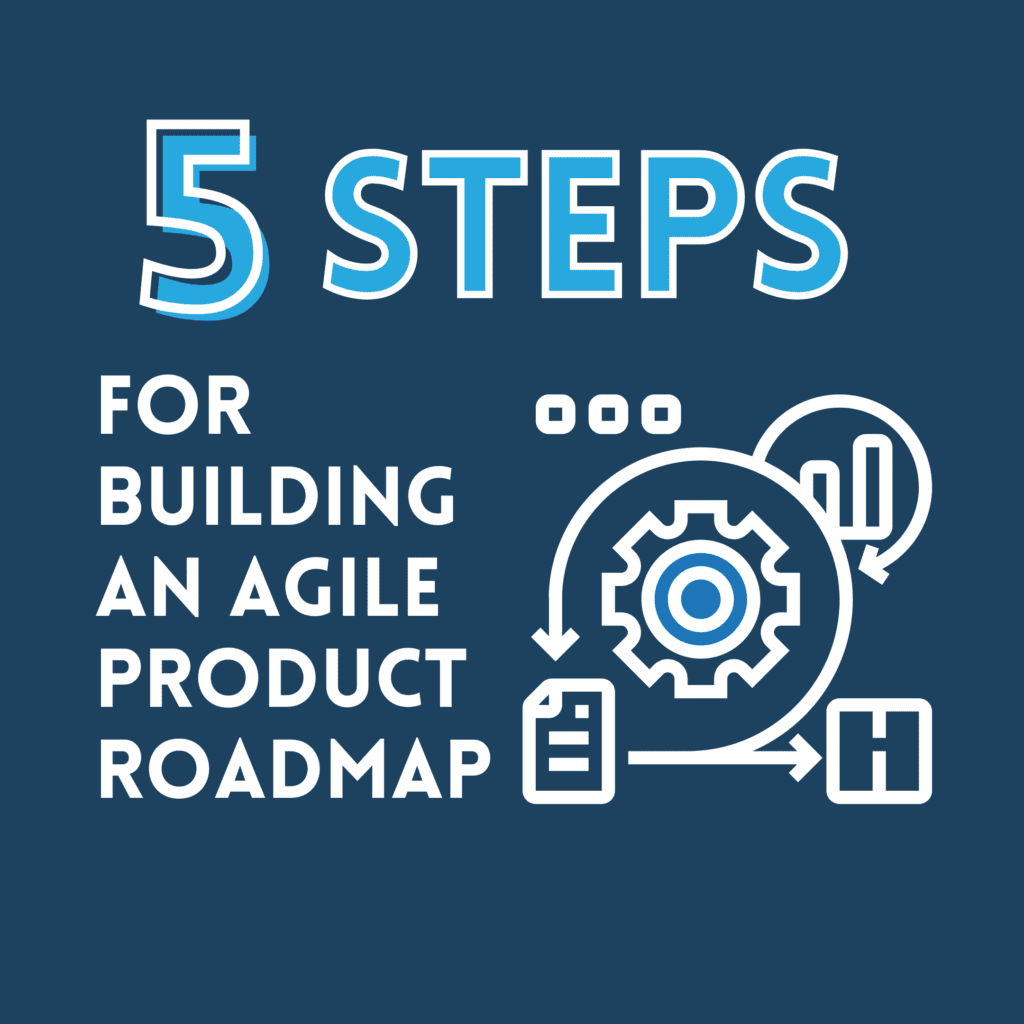Product roadmaps are long-term product development plans, which require leadership to defne their business goals and articulate a strategy for achieving them. Effective product roadmaps align stakeholders by supporting business objectives and product strategy. They provide enough information for stakeholders to plan, but can also adapt to necessary changes. Due to their flexibility, many organizations favor agile roadmaps — flexible plans of action for achieving one’s product vision.
Here are the five steps for building an agile product roadmap:
1. Define your product strategy
A product strategy describes the way a company or business unit intends to use a product to achieve its business goals. It typically answers the following questions:
- What are the business’ goals?
- How will the business measure success?
- Who are the target customers? Which of their key needs can the business meet?
- Which target customers does the business want to win?
- What other options do customers have? Who are your key competitors?
- What differentiates the product from those of competitors?
Defining your product strategy is crucial; it allows you to evaluate the quality of your product roadmap.
2. Identify key stakeholders and align them around your product strategy
Product stakeholders include architects, board members, customers and customer-facing groups within your organization, designers, engineers, human resources, investors, legal teams, and sponsors. Which stakeholders are relevant depends on your organization and product.
After identifying key stakeholders, ensure they’re aligned on your product strategy.
You can help people feel comfortable providing unbiased feedback by inviting them to one-on-one meetings. After incorporating their feedback, host a group meeting where everyone discusses the strategy and agrees to support it. Continue to reevaluate the strategy until everyone is aligned.
3. Establish and sequence product milestones
Milestones address the barriers to achieving product strategy. Often, these barriers are features — new or improved functionality that delivers value to users — either directly requested by customers, or not yet considered. Sometimes, features will directly benefit the customer; other times, they’ll improve another strategic objective (like lowering cost structure).
Because they represent major product changes, milestones require significant research, design, and development. You can confirm milestones and solicit feedback from stakeholders to decide which tasks are prioritized.
If any milestones seem too large or small, you can divide or combine them. By the end of this process, you should have a sequence of comprehensive product milestones, which work to implement your product strategy.
4. Schedule milestones
Product development teams divide their time between several key activities, including bug fixing, product maintenance, and engineering.To calculate your team’s development capacity, find the sum of the (estimated) percentage of time spent on each of these activities.
The remaining percentage indicates the development team’s development capacity, which can be used to determine the number of developer days, weeks, or months it will take them to complete each milestone.
5. Align stakeholders around the product roadmap
The purpose of a product roadmap is not the document itself, but the alignment of product stakeholders around the development plan the roadmap represents.
Once the outline of your product roadmap is complete, meet with product stakeholders to review and approve it.
During the meeting, be sure to do the following:
- Review the product strategy.
- Review your team’s development capacity.
- Introduce each milestone, its developer time estimate, and its strategic objective.
- Ask stakeholders for feedback.
- Modify your documents during the meeting, so everyone can see the implications of the recommended updates.
This process may result in negotiations between team members. But, the goal of the meeting is to agree on a roadmap that all stakeholders support, and can use in their planning.
By collaborating on this five-step process, product teams can effectively deploy an agile product roadmap — illustrating their adaptable, short-term plans for achieving product goals. At Azul Arc, we begin our product development process by creating an agile product roadmap. This tool facilitates our systematic design and development of custom websites, mobile applications, and visualization tools.
To learn more about us and our previous projects, read reviews left by clients on our Clutch profile or contact us directly to get started on your next project.
